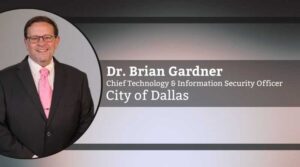Cybersecurity

Insights on Cyber-Security, Prevention, and Preparation

Guarding the Dragon’s Den: Local Government Mitigation for today’s targeted Critical Infrastructure

Blue, Red, and Purple Approach

The Challenges Amongst Cybersecurity, Privacy, and Artificial Intelligence

The Evolution and Importance of Cybersecurity in the Digital Age

Redefining Cyber Risk for Modern Information Security Programs

Regionalization of Cyber Security Defense

A Dive Into The TPRM Landscape

What does a one-device policy mean to you?

Ukraine’s Battle against Russian Cyber Aggression
Cybersecurity protects computers, networks, and data from unauthorized access, use, disclosure, disruption, modification, or destruction. It involves implementing various measures, technologies, and best practices to safeguard information and mitigate potential risks and threats in the digital realm.
In today’s interconnected world, where businesses, governments, and individuals heavily rely on computer systems and the internet, cybersecurity has become crucial to ensure information confidentiality, integrity, and availability. The concept includes a vast array of fields, such as:
- Network Security: This involves securing computer networks from unauthorized access, data breaches, and network attacks such as malware, ransomware, distributed denial-of-service (DDoS) attacks, and intrusion attempts. It includes firewalls, intrusion detection systems (IDS), and virtual private networks (VPNs).
- Application Security: Application security focuses on securing software applications, web applications, and mobile apps from vulnerabilities that attackers can exploit. This includes secure coding practices, regular security assessments, and implementing measures like authentication, access control, and encryption.
- Data Security: Data security involves protecting sensitive and valuable data from unauthorized access, theft, or tampering. It includes data encryption, access controls, data loss prevention (DLP) measures, and secure data storage and transmission.
- Endpoint Security: Endpoint security focuses on protecting individual devices, such as computers, laptops, smartphones, and tablets, from security threats. It involves measures like antivirus software, endpoint protection platforms (EPP), and device management policies.
- Cloud Security: Cloud security addresses the unique challenges associated with cloud computing, including securing data stored in the cloud, protecting cloud infrastructure, and ensuring secure access to cloud services. It involves strategies like encryption, identity and access management (IAM), and regular audits of cloud providers’ security practices.
- Social Engineering: Social engineering refers to the manipulation of individuals to gain unauthorized access to systems or obtain sensitive information. It involves techniques like phishing, pretexting, and impersonation. Educating users about social engineering risks and implementing security awareness programs are crucial in combating this type of threat.
- Incident Response and Recovery: Incident response is the process of handling and mitigating the impact of cybersecurity incidents, such as data breaches or network compromises. It involves detecting, containing, eradicating, and recovering from security incidents. Incident response plans, including roles and responsibilities, communication procedures, and backup and recovery strategies, are essential components of an effective cybersecurity program.
To ensure strong cybersecurity, organizations, and individuals should adopt a multi-layered approach that combines technical solutions, employee education and awareness, regular vulnerability assessments, and proactive monitoring and response. It is important to stay updated on the latest threats and best practices for safety. It is also important, as the cybersecurity landscape is constantly evolving.
